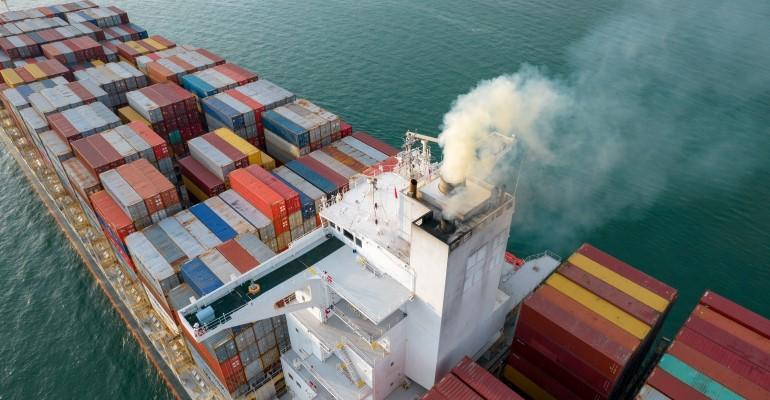One company claims to have cracked the technology necessary to offer both carriers and shippers the data they will need to meet the EU ETS regulation with the necessary accuracy.
VesselBot (VB), a tech start-up based in northern Athens, has been around since 2015 and initially offered digital solutions to the maritime chartering sector, but over the last two years has developed a digital system for measuring vessel emissions.
VB CEO and founder Constantine Komodromos told Seatrade Maritime News: “The company has collated data on every container vessel, between 5,500 and 6,000 ships, and created a digital twin for each ship. The data specifies each vessel’s characteristics, size, main engine type, auxiliary engines, and marries this data with port pairs to deliver specific fuel consumption and emissions using AIS and weather data.”
Komodromos said that some of this data has been bought, while other data has been sourced through technical sites and some through direct contact with owners.
Data regarding vessel fuel consumption has already been benchmarked, and Komodromos said he is confident the company’s calculations are well within a 10% margin of error. He believes that is sufficiently accurate to allow shippers to benchmark their own Scope 3 emissions with the average consumption and emissions on particular trades.
“After getting your reports as a shipper, what you can do is identify those trading areas that you are underperforming in with regards to the market average for that trade lane,” explained Komodromos, “once you identify a hotspot you can drill down into that trade lane and identify which carriers you’re using and how each carrier performs on that trade, based on the market average,” he added.
In identifying the cleanest operator on a particular trade, Komodromos cautions that there are other considerations that may make one operator appear to be less efficient than others. He points out that if you select port pairs such as Shanghai to Rotterdam, one service may have very different emissions data from another.
This could be explained by the fact that the apparently less efficient service makes more port calls than the seemingly more efficient service.
While the clientele of the carriers will be able to benchmark their service providers, including the inland elements of door-to-door deliveries, says VB, carriers will also be able to benchmark their own emissions against the average industry levels.
With carriers now announcing a wide range of EU ETS charges, the VB system or other similar technology could mean that shippers can manage their costs better and guard against overcharging, for what one shipper representative once described as “the mother of BAFs”.
EU ETS charges announced by the lines range from €12 to 35 per teu from Asia to Europe for a dry box. And from €9 to 40 per teu on the Atlantic, with the Hapag-Lloyd charging the least and Maersk’s charge the highest in both cases. The charges are much higher for reefer containers.
Copyright © 2024. All rights reserved. Seatrade, a trading name of Informa Markets (UK) Limited.
Add Seatrade Maritime News to your Google News feed.  |

